Guest post by Alysia Mann Carey.
Since writing my last research diary entry, I have been doing work throughout the Northern Cauca region in Colombia. This entry will discuss my participatory and collaborative research on Development, Intersectionality, and Afro-Colombian Women’s Struggles with some community-based organizations, specifically, the Black Women’s Mobilization for the Care of Life and Ancestral Territories, and the Afro-Colombian Women’s Association of Northern Cauca.
In this entry, I will also discuss some of the ways I have been able to utilize MAXQDA’s Visual Tools to visualize my research and analysis results.
The Afro-Colombian Women’s Association
Over the past month, I have been working with the Afro-Colombian Women’s Association in preparation for the Afro-descendant Women’s Association in preparation for the Afro-descendant Women’s Assembly Meeting in March.
The Afro-descendant Women’s Association in Northern Cauca is a grassroots organization, which has been working for the rights of women and afro-descendent communities in this region of Colombia for over 20 years.
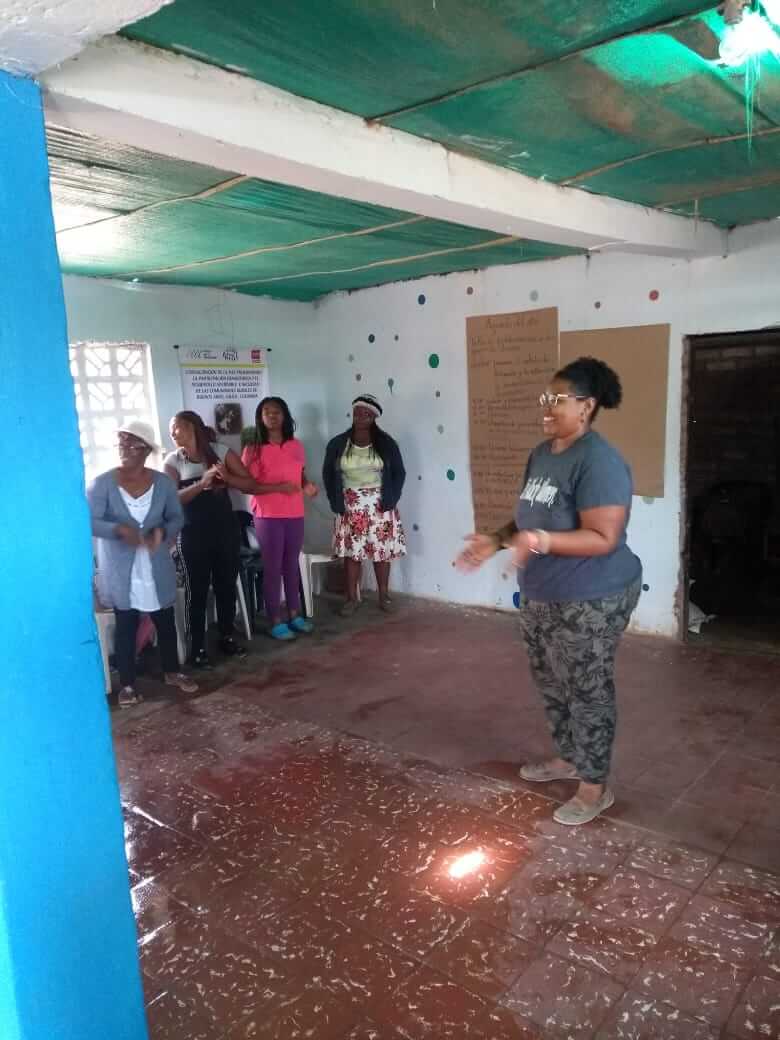
They are a grassroots organization that was created in 1997 in order to respond to the diverse needs of Afro-descendent women in the region – arising due to persistent violations of human rights, the absence of public policies addressing ethno-racial discrimination and equitable treatment, the lack of knowledge surrounding women’s rights, and the inadequate management of natural resources which affect the daily lives of Black women – with the aim of fostering the environmental, social, and economic sustainability of Black communities.
One of the many projects they are working on concerns the implementation of the National Development Plan in Northern Cauca (PDET), and how this plan has incorporated their interests and perspectives as Black communities and Afro-descendant women in particular.
Identifying Ethno-Racial and Gender-Based Initiatives with MAXQDA
With the help of MAXQDA’s coding capabilities, I am categorizing and analyzing PDET reports in Northern Cauca. I am paying particular attention to ethno-racial and gender-based initiatives.
Connecting Themes with MAXQDA’s Liking Functions
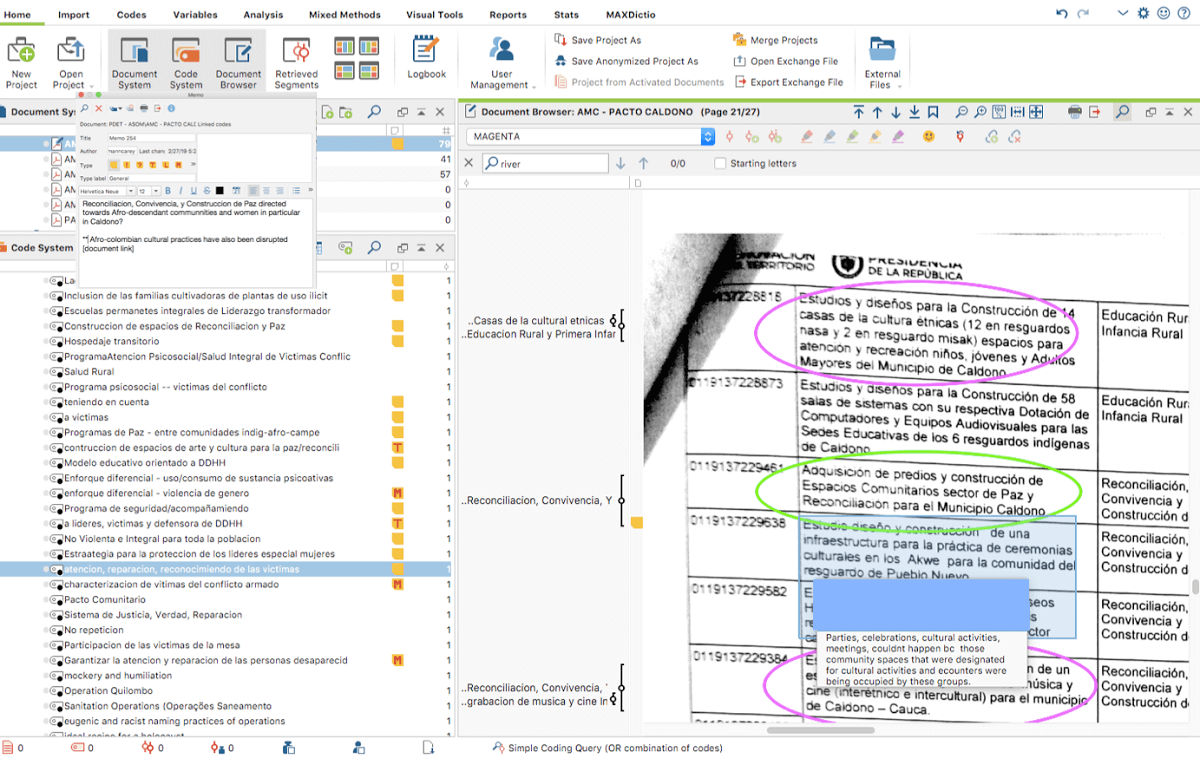
Memo and Document Links in MAXQDA 2018
As I am comparing various PDET reports as part of a collaborative methodology with ASOM, as well as the municipal proposals developed by Afro-Colombian women throughout Northern Cauca, MAXQDA’s document links and memos have been extremely helpful in connecting themes, questions, as well as convergences and divergences between what the government has accepted as part of these plans and what organizers have demanded.
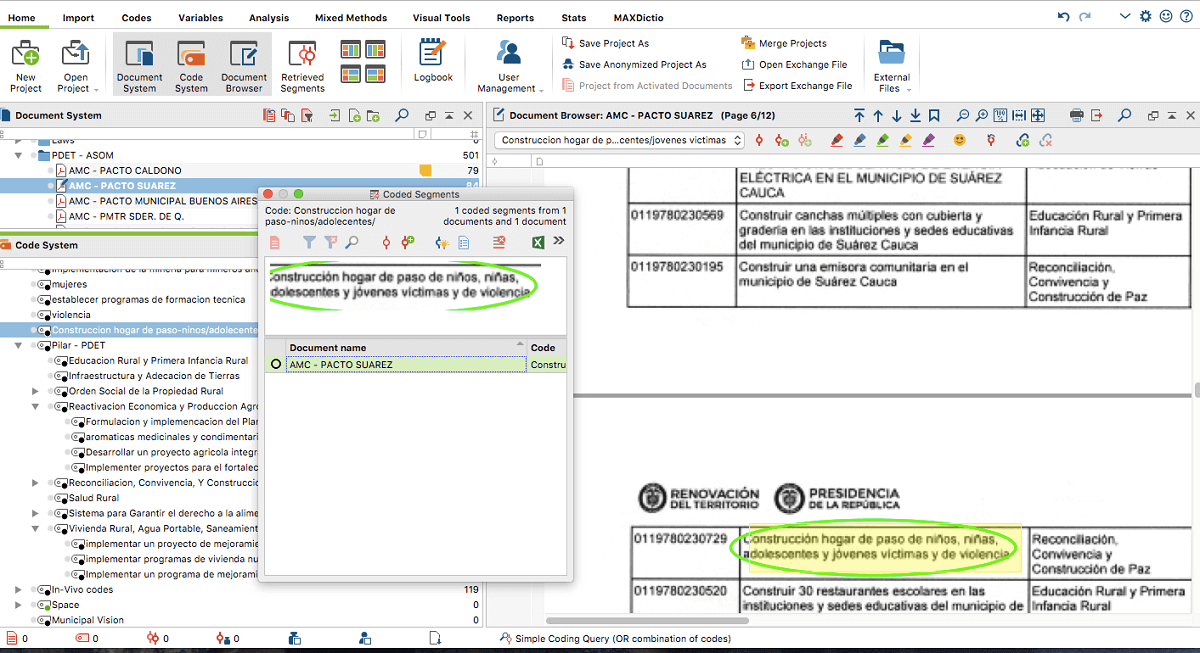
Creating code categories for cross-document analysis
The cross-document analysis has allowed me to be able to visualize these differences between multiple documents. I am able to get an idea of the number of principles that deal explicitly with gender and/or ethno-racial groups, land/territory, and those impacted by the armed conflict and how gender, race/ethnicity, land, and conflict is talked about in these reports.
Visualizing Themes with MAXQDA’s MAXMaps Feature
In addition, as part of my analysis, I am looking specifically at the ways in which ethno-racial groups’, women’s, and particularly Afro-Colombian women’s, demands have been incorporated into the final PDETs. After conducting in-vivo (first cycle) and process (second cycle) coding processes, I wanted to create a map using MAXQDA’s MAXMaps feature to have a visual representation of some of the themes and findings.

Hierarchical Code-Sub-Code Model created using MAXMaps
In addition to the development plans, I started to talk with some women about their experiences of violence as well as their experiences in documenting cases in the region. The single case MAXMaps model has helped me to visualize the interconnectedness between different forms of violence that have and continue to intersect in Black women’s lives.
As I discussed in my last journal entry, one of the issues I encountered was that some of my codes were falling into multiple categories. The MAXMaps feature helped to represent these connections and relationships in a way that was difficult to relay in a written format at this stage of research.
The map includes information from an oral history interview I conducted with a woman which points to different forms of violence against black women’s bodies, at different times, and by different actors. The map is an attempt to illustrate these connections visually in ways that sometimes make it hard to capture only through categories.
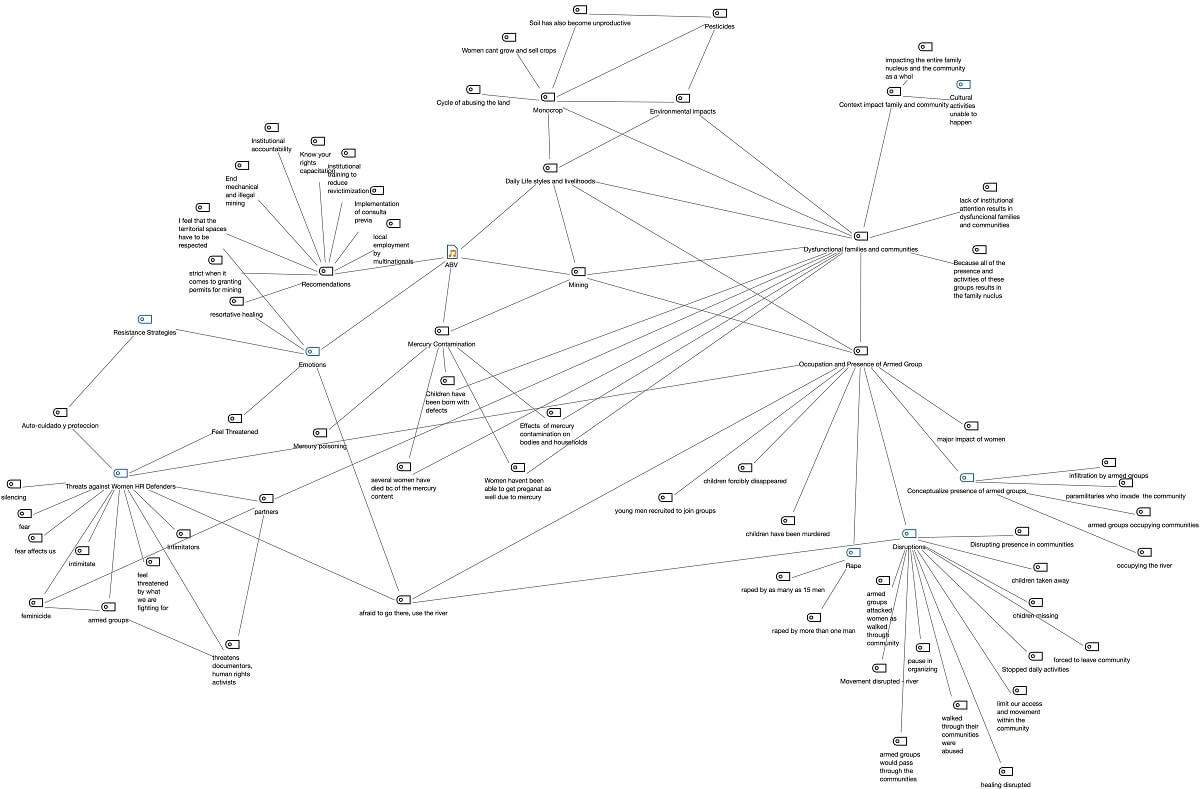
Map created to conceptualize different forms of violence
As I continue my research, I look forward to incorporating further visual tools offered by MAXQDA more, not only for my own research, but also to assist with the organizations and movements and their missions, initiatives, and projects.
What’s Next?
I am now moving on to the second half of my research in Colombia. I will be conducting more interviews and focus group discussions with Afro-Colombian women and I will continue to utilize MAXQDA’s transcription mode, memos, and MAXMaps, enhancing my skills throughout the process. Thank you for following my research experiences and my learning journey thus far.
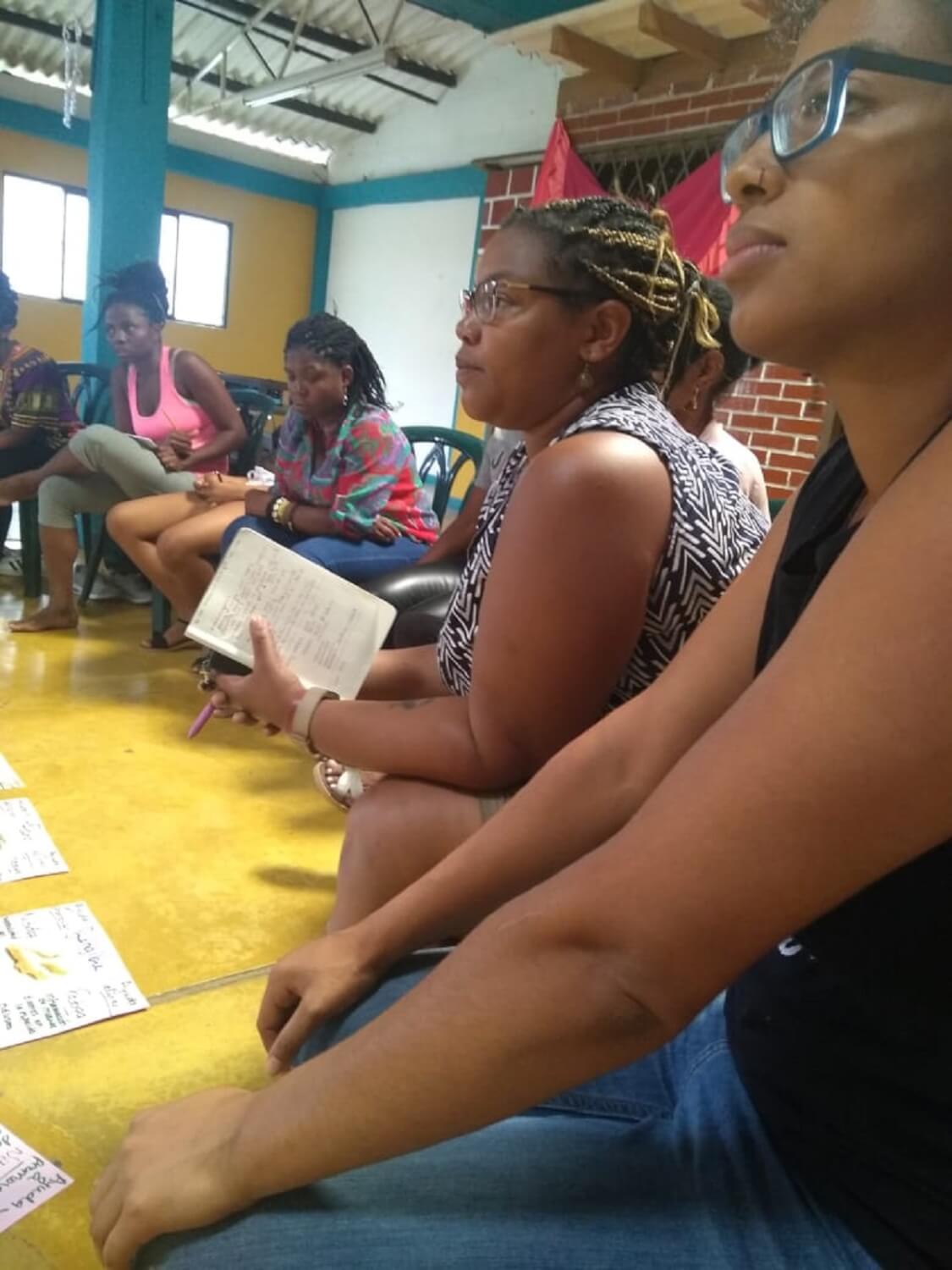
As I enter this stage of my ethnographic research, I will conduct more in-depth interviews and focus groups with mothers, community members, and organizers who I have been working with thus far, and explore themes that emerged through my previous engagements with them—such as the language of intimacy when describing encounters with militarized violence, and their conceptions of community-based justice and peace.
These individual narratives will be juxtaposed with collective narratives that emerge from focus groups, participant observations, and ethnography. The focus group workshops will deal with the construction of collective memory; the impacts of police violence in Black communities; Embodiment and Space; and Self and Community Care. I plan on continuing to experiment with the different visual tools offered by MAXQDA as well as some of the features specific for focus groups and group interviews.
Editor’s Note
Alysia Mann Carey is a recipient of MAXQDA’s #ResearchforChange Grant. She is a PhD candidate in Political Science at the University of Chicago, USA. Her dissertation titled, “I felt the hand of the government in my womb: Black women, state violence, and the transnational struggle for life in Brazil and Colombia” will take an ethnographic approach to the experiences of Afro-descendant women in two countries. This is her final fieldwork diary and we wish Alysia Mann Carey all the very best on his ongoing research journey!




